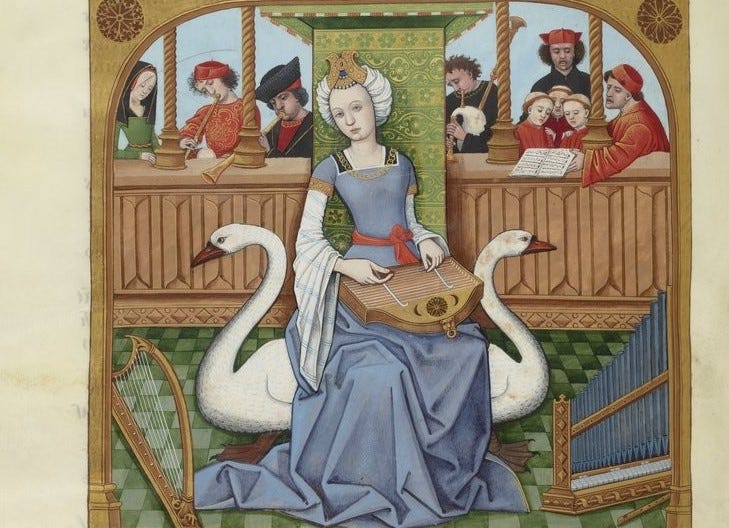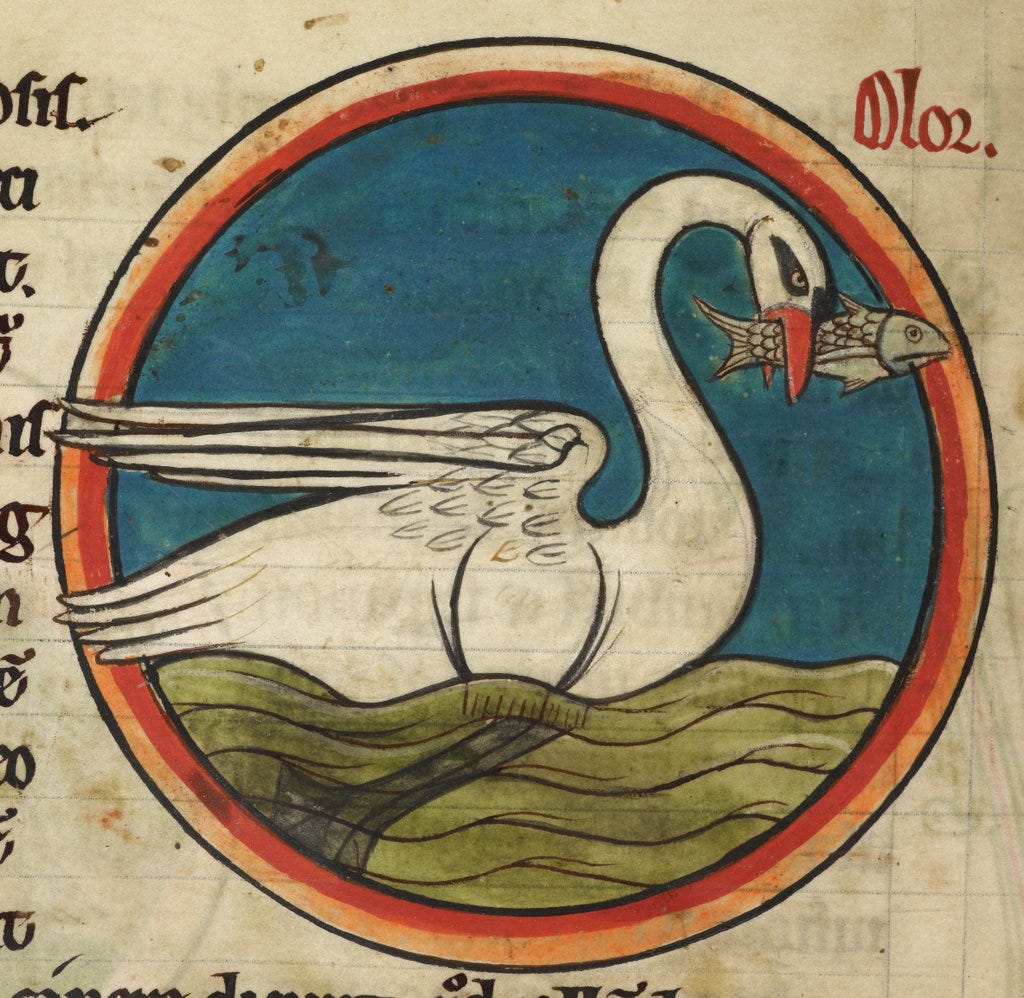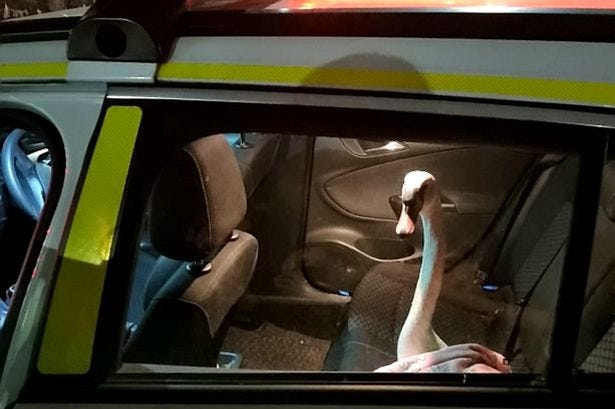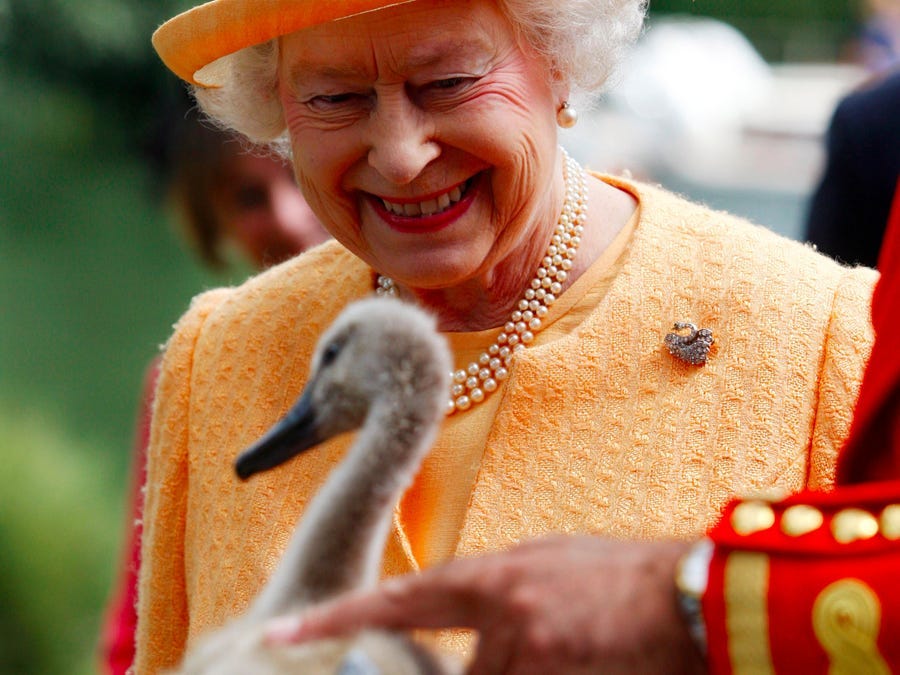There is a pervasive myth that the British Crown owns all of the swans in the country. Like rumours of laws that forbid putting your postage stamps upside down or dying in Parliament, it is not true, but is the sort of thing that sounds just silly enough that it could be.
These myths seem to stem from the fact that people get a kick out of imagining the British legal system as arbitrarily confusing and mired in weird historical precedent. As our deep dive into Swan Law is about to show us, it absolutely is, but in far more complicated ways than many people realise.
So, who does own the swans? Do swans even have owners? Can I own a swan? 500 years of British history will help us answer these burning questions. With a royal coronation on the horizon, let’s make sure that we all understand King Charles III’s exact relationship with those swans.
In order to fully understand the complexities of the scope of British Monarchy Swan Privileges, we need to go back to the Middle Ages, when swans were a luxury good. Valued as both a delicacy at feasts and a decoration for estates and waterways, swans were highly sought-after birds. They were indeed largely royal property and were heavily restricted so that common folk could not buy and sell them as other fowl. But there are records from the High Middle Ages onwards that the reigning monarch would grant some nobles the special privilege to own swans.
This right was solidified in 1482, when it was decreed by King Edward IV that only people of high status whose estates were valued above a certain amount could be granted the right to own swans in England and Wales and thereby eat them. This meant that eligible parties had to apply to the Crown for a swan mark—essentially a personalised emblem that would be carved onto the beaks of the swans they owned. If they were deemed worthy of such a privilege as swan ownership, the swan mark would have to be purchased at the price of six shillings - swans not included. This was about the same amount as a year’s wages for a household servant.
A page from a book of swan marks from the 1570s
A complex set of rules were drawn up surrounding swan ownership, outlining how swan theft was to be punished, how cygnets should be divvied up if the parents were owned by two different parties, the special rights afforded to land where swans were nesting, and basically every other swan-ownership-related scenario under the sun. Special courts called Swan-moots were established to enforce these rules and settle legal disputes over swan ownership, as was a special royal position called The Master of the King’s/Queen’s Game of Swans.
Examples of swan crimes and punishments from King Edward IV’s Swan Act of 1482
Crime: counterfeiting, altering, or removing a swan mark Punishment: one year’s imprisonment, a fine of three pounds, six shillings, and eight pence, and a lifetime ban from owning swans
Crime: carrying a swan-catching hook within forty lugs (approx. 200 metres) of a stream without reasonable cause Punishment: a fine of one pound, ten shillings, and four pence
Crime: preventing swans from breeding, even if they are your swans Punishment: one year’s imprisonment and a fine of thirteen shillings and four pence
Crime: letting your dog scare a swan away Punishment: a fine of thirty shillings and four pence
However, the reigning monarch retained ownership of all unmarked swans, which could not be so much as touched by anyone else under pain of hefty fines and imprisonment. Thus, it was effectively impossible for anyone who was not a noble to enjoy swans for dinner, while a royal feast might see dozens of them cooked up for guests. The monarch was also granted the permanent title of “Seigneur of the Swans”, lest anyone ever forget who was running the swan show.
Because ownership of swans was such a contentious and high-stakes business, an annual “swan-upping” was introduced, in which the Master of the Swans and his assistants would round up all of the birds, check their marks, identify the parents of cygnets, ascertain ownership, and update their records. If any owners were found to have become ineligible for their swan marks over the past year because their wealth had decreased below the threshold amount, their swans would be seized and become property of the Crown, as would any birds whose ownership could not be conclusively determined. The Crown had their own swan mark, but also reserved the sole right to mark swans on the leg in the event that pre-marked swans were seized.
A depiction of swan-upping in 1875
This complex system of swan regulation carried on for several centuries, but by the 1800s swans began to fall out of fashion as a delicacy and the number of swan-mark-holders declined sharply. In 1878, the Royal Society for the Prevention of Cruelty to Animals (RSPCA) kicked up a bit of a fuss about the still-extant (though rare) practice of grabbing swans, tying them up, and carving their beaks to indicate ownership, which effectively signalled the end of most swan activities in England and Wales.
Today, the Crown retains the ownership of all unmarked swans in England and Wales, and it is still strictly illegal to harm swans or keep them without special permission, although this is more due to recent laws on animal cruelty than archaic customs of swan-prestige. King Charles III, like all of his forebears since the Middle Ages, is still titled the Seigneur of the Swans, though he is not likely to serve any of the protected birds for Christmas dinner.
Back in the day, you could just eat a swan if he was misbehaving. Not the case any more.
However, he is still not the sole owner of swans in England and Wales: two other groups, the Worshipful Company of Vintners and the Worshipful Company of Dyers, which were granted swan ownership privileges in the 15th century, retain their rights today and still conduct an annual swan-upping together with the Royal Master of the Swans (which still exists!) on the River Thames. Nowadays, swan-upping is more of a census/welfare check on the birds, though the process remains largely the same, with swans plucked from the water and trussed up until they can be checked over and released. Rather than carve marks into the swans’ beaks, each organisation marks their swans with a more humane leg ring, while the Crown’s swans remain unmarked.
The 1707 Acts of Union extended the Crown’s swan jurisdiction to most of Scotland, too, but thanks to ancient Viking laws in the isles of Orkney and Shetland that are still upheld to this day, no British monarch may stake a claim on any of the majestic fowl there: those swans belong to the people.
“Yeah he looks fine let’s chuck him back”
Feels like a bit more trouble than it’s worth to me but I guess you gotta check in on those swans












Having a childhood in Kent I ran into many swans and was also told they were the property of the Crown, a funny myth I never thought to question lol. Although I personally wouldn't avoid a swan because of any law, but because swans often take the law into their own hands
"Swan marks" sound super brutal to the swan. Fascinating history.